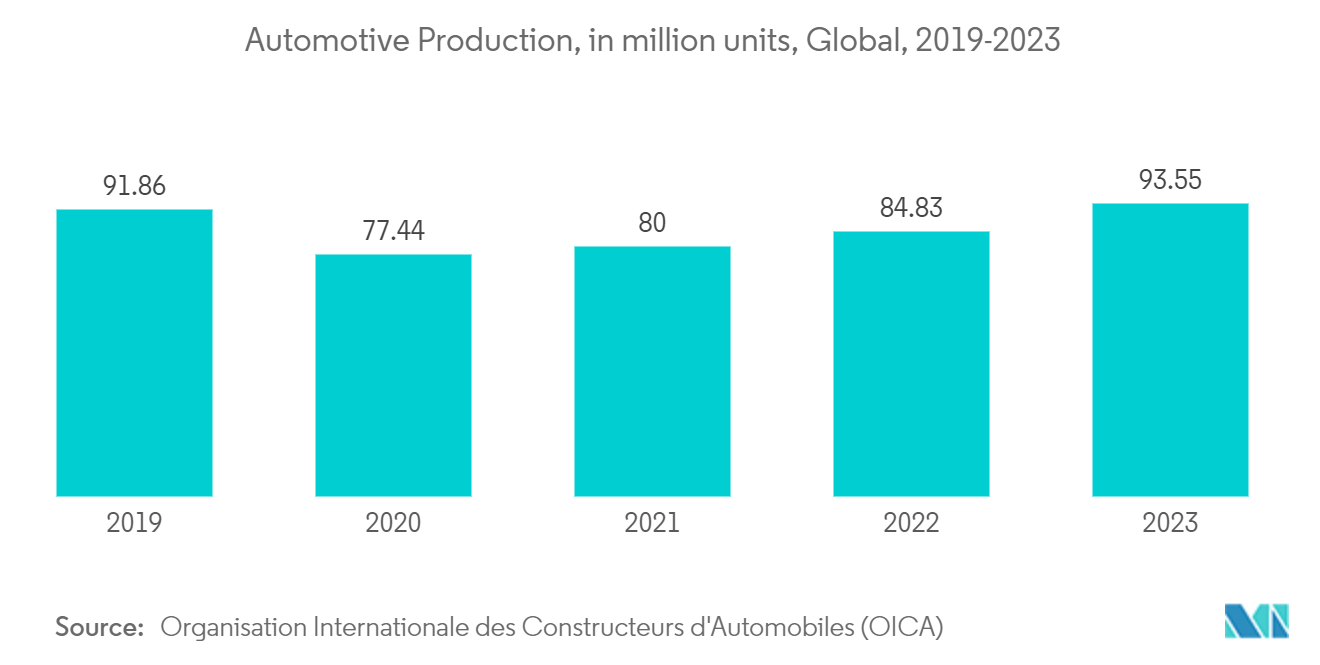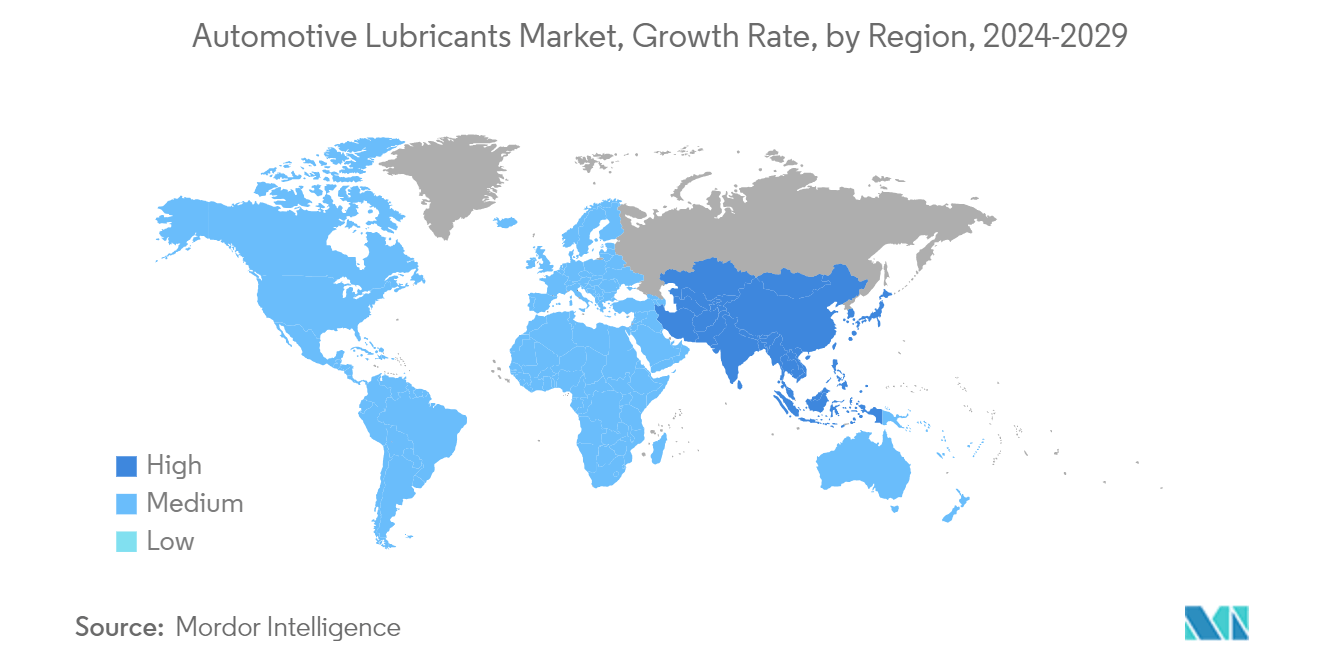Market Trends of Automotive Lubricants Industry
Increasing Usage of Engine Oils
- Engine oils, primarily composed of 75-90% base oils and 10-25% additives, play a crucial role in lubricating internal combustion engines.
- These oils are essential for various applications, including wear reduction, corrosion protection, and ensuring the smooth operation of engine components.
- In response to the rising demand for engine oils, leading global manufacturers are diversifying their offerings, introducing new engine oils tailored to specific consumer needs.
- In April 2024, Saneg, a key player in the lubricant industry, bolstered its footprint in Uzbekistan by rolling out synthetic and semi-synthetic motor oils from its Italian plant. Specifically, the company unveiled its SEG Motol Diesel 10W-40 (API CI-4/SL) oils, tailored for heavy-duty diesel machinery like long-haul tractors, off-road vehicles, and construction equipment.
- In September 2023, ExxonMobil Marketing (Thailand) Limited (EMMTL) announced its commitment to serve Thai consumers and business sectors with innovative product solutions. For automotive, Mobil 1 and Mobil Super are engineered to raise engine protection performance. This makes a positive impact on the studied market.
- Growing demand for lightweight, high-performance cars in emerging markets, increasing automotive hubs, and rising disposable income are the major reasons for the high demand for automotive lubricants.
- In 2023, buoyed by a strong economy and shifting consumer preferences, the automotive sector witnessed notable growth. Data from the Organisation Internationale des Constructeurs d’Automobiles (OICA) indicates global vehicle production reached approximately 93.54 million units, up from 84.83 million units in 2022, marking a growth rate of about 10.26%.
- Germany, a key player in Europe's automotive landscape, is home to renowned brands like Volkswagen, Mercedes-Benz, Audi, BMW, and Porsche. With ongoing investments in R&D and a boost in automotive production, the country is poised to drive the growth of the automotive lubricants market.
- In Europe, the overall registration of new motor vehicles increased by 18.7% in 2023 compared to the previous year. In 2023, passenger car and commercial vehicle sales reached 14.99 million units and 2.9 million units, respectively, compared to 12.64 million units and 2.44 million units in 2022.
- Given these dynamics, the market is set for significant growth in the coming years.

Asia-Pacific is Expected to Dominate the Market
- Rapid industrialization in the Asia-Pacific region is poised to fuel market growth. The region's burgeoning automotive industry is set to drive an uptick in lubricant demand.
- Furthermore, as the automotive sector increasingly relies on lubricants for optimal performance, this trend is expected to bolster the market further. Asia-Pacific is projected to command a significant market share, predominantly driven by consumption in developing nations like China, Malaysia, India, Thailand, Indonesia, and Sri Lanka.
- China stands out as a global powerhouse, both in lubricant consumption and production. Major players shaping China's lubricant landscape include Shell Plc, Sinopec, ExxonMobil Corporation, and BP Plc. The sector's growth was bolstered by heightened investments and expansions throughout the forecast period.
- China's automotive sector, driven by a burgeoning vehicle fleet and tech advancements, emerges as the top automotive lubricant consumer. 2023 saw both sales and production of automobiles in China hit a record 30 million units, marking a notable double-digit growth from the prior year, as highlighted by the China Association of Automobile Manufacturers (CAAM).
- Moreover, 2023 marked a significant rebound for China's commercial vehicles, with sales and production jumping 22.1% and 26.8%, respectively, reaching 4.03 million and 4.04 million units, according to CAAM data. This surge in automotive sales and production directly amplifies the demand for lubricants.
- In 2023, India's passenger vehicle sales surpassed the 4 million milestone for the first time, fueled by rising disposable incomes, a boom in new sport-utility vehicles, and attractive loan rates. The domestic market reported sales exceeding 4.1 million cars, sedans, and utility vehicles, marking an 8.2% increase from 2022's 3.79 million, as per the Society of Indian Automobile Manufacturers (SIAM). Notably, utility vehicles made up 57.4% of total sales.
- In 2023, Japan saw a notable uptick in new passenger car registrations, hitting approximately 3.99 million—a significant rise from the 3.45 million recorded in the previous year. Overall, the country registered about 4.78 million new motor vehicles, with passenger cars leading the charge.
- These factors, coupled with favorable government regulations, are driving the heightened demand for automotive lubricants across the region.


